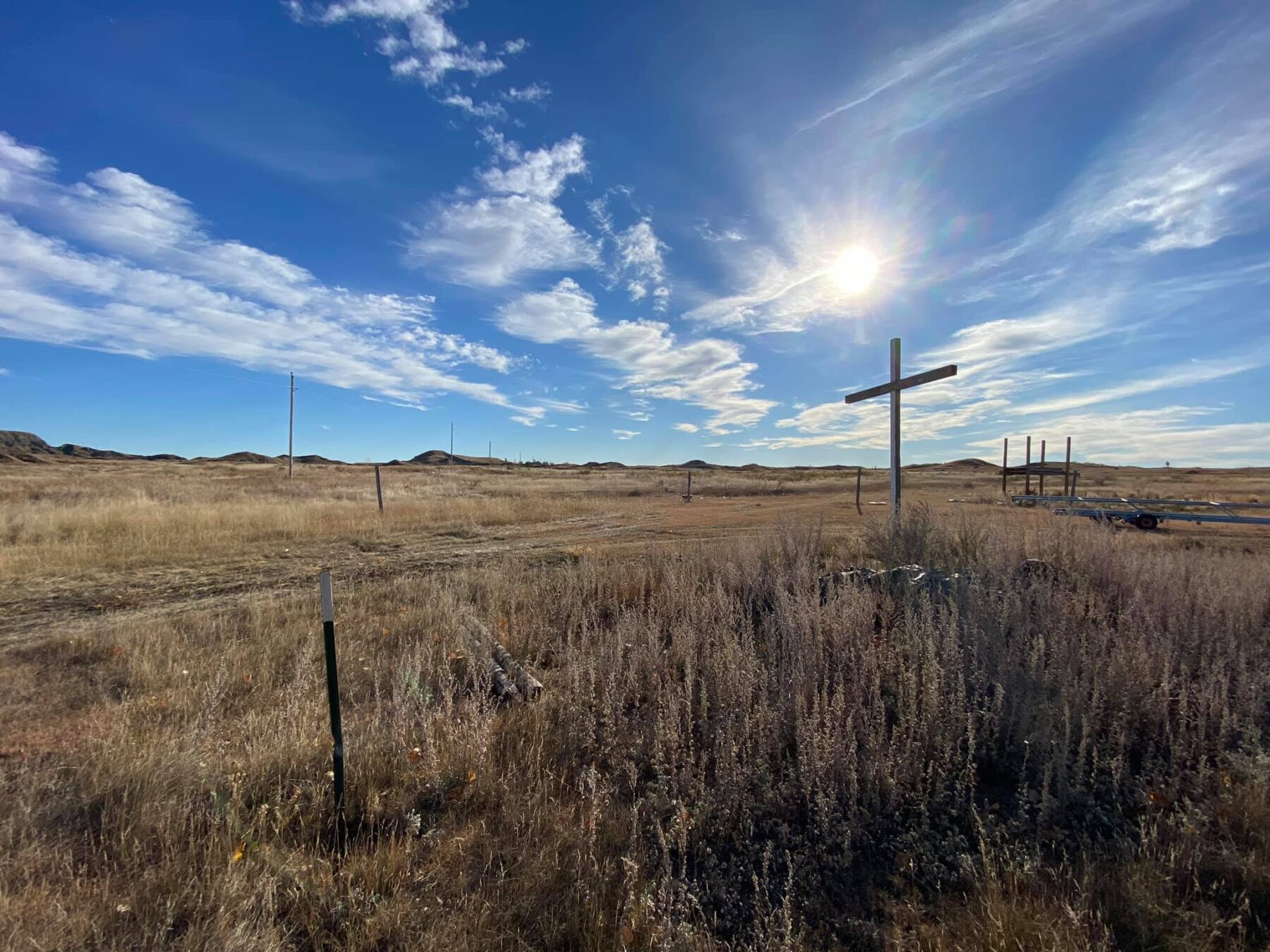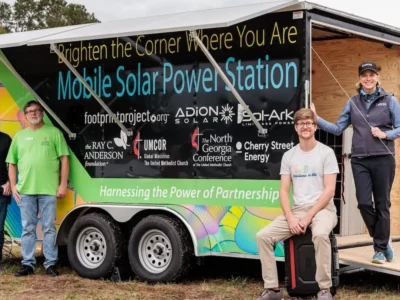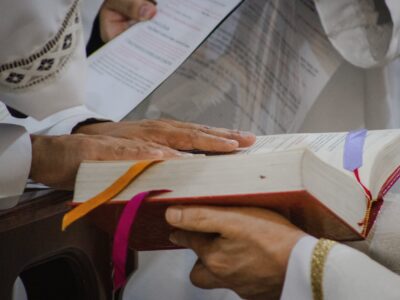Just 20 miles away from the Dakota Access Pipeline and part of the Standing Rock Episcopal Community in the Dakotas, there’s a 40-acre plot of land, called St. Gabriel’s Episcopal Camp, with a mission and vision to serve the youth of Standing Rock and teach visitors who come from all over the world about treaty rights and creation care.
The story of Standing Rock and St. Gabriel’s Camp is a complex tangle of political, religious, historical, and ecological concerns stretching back in time, long before the protests of the pipeline drew international attention. St. Gabriel’s is perfectly positioned to help those of us removed from the lives of indigenous people better understand what was at stake at Standing Rock.
St. Gabriel Camp at Standing Rock: Holy Land for a “House of God”
According to Reverend Dr. John Floberg, the tension and conflict that occurred at Standing Rock over the Dakota Access Pipeline originates in our shared historic trauma—the trauma of Native peoples as well as the trauma of non-Natives—which stretches as far back and beyond the events of the 1860s. Not only do the Native people who live on the reservation today carry the scars of what happened to their people all those years ago—the violated treaties, the massacres of their people, the forced migration to designated lands, and more—the white settlers in the surrounding community also remember in their own skin and history the shock and terror of those battles, especially Custer’s men being defeated at the Battle of the Little Bighorn.
These scars leave their marks.
Rev. Dr. Floberg has served as Priest of the Standing Rock Sioux Reservation for over 30 years and knows well the history of the region, as well as of St. Gabriel’s Camp. After the Sioux and Cheyenne warriors defeated Custer at the Battle of the Little Bighorn (or as Lakota call it, the Battle of Greasy Grass) a Warrior named Red Hail returned from the battle to Standing Rock Indian Reservation. Red Hail allotted 40 acres of his allotment of land to the Episcopal Church so that his larger extended family would always have a “House of God” among them.
A church stood at St. Gabriel’s for quite some time, until 1970, when the building caught fire and burned to the ground.
By then, “the economy of agriculture had changed so much in the Dakotas that most people who lived near and around [the original church] were gone; the land couldn’t sustain smaller farms anymore,” Rev. Dr. Floberg shared. “A cemetery remained there until I arrived on Standing Rock in 1991.”
Some members of the community wanted to see a church reconstructed at the cemetery, because they had family members who were buried there. From the early 90s until 2016, St. Gabriel’s Camp became a center for youth ministry, with more young people coming each year to improve the camp, adding sidewalks, buildings, cabins, and eventually a lodge that could be used for year-round training events as well as summer camps.
Then, the Dakota Access Pipeline happened.
“Everything that happened in Cannon Ball [on Standing Rock Indian Reservation] at the camp there got layered on top of what we were already doing,” said Rev. Dr. Floberg.
The Dakota Access Pipeline
The “camp” in Cannon Ball, ND, was ground zero for the pipeline protests.
When the U.S. Army Corps of Engineers accepted an application for the construction of the Dakota Access Pipeline, the Standing Rock Sioux Tribe passed a resolution stating that “the Dakota Access Pipeline poses a serious risk to the very survival of our Tribe and … would destroy valuable cultural resources.”
Besides the Tribe’s argument that the construction of the pipeline violated Article II of the Fort Laramie Treaty, which guarantees the “undisturbed use and occupation” of reservation lands surrounding the location of the pipeline, the pipeline raised concerns about water pollution should the pipe leak or break, resulting in the desolation of the land, potentially rendering it uninhabitable.
As they prepared to protest the construction of the pipeline, the Native people of Standing Rock Indian Reservation were told by their elders in ceremony that the only way to have this movement go forward was to engage in a nonviolent protest. The people were told to “stand as stone”—they weren’t to use obscenities or violence, said Rev. Dr. Floberg.
But as the movement drew national and international attention, thousands of Native and non-Native people came to protest alongside the Sioux at Standing Rock. Tensions escalated between the government officials and the gathering.
“There were so many things that have led me to believe that historic trauma on the part of the state department was kicking into gear,” Rev. Dr. Floberg said. “They were afraid of these Indian people gathering. The last time they had seen a gathering like that was at Greasy Grass [Little Bighorn].”
Back in 1868, the people in Bismarck and surrounding communities were shocked to hear the news of what happened to Custer’s army at Little Bighorn, and as graphic news spread nationwide over the next few weeks, that trauma would be passed on to others as secondary trauma. Flash forward 140 years, and the generational memories of those traumas flared once more.
When people started to come to the camp to protest the pipeline, the State of North Dakota responded by erecting a barricade on the highway so they couldn’t get down the highway to the camp anymore.
“When you sat in your car and they were questioning why you needed to get into the barricade, if you looked in the rearview mirror you would see Custer’s house,” said Rev. Dr. Floberg.
“The people who came in and were using up Standing Rocks’ space and reputation ended up making it very difficult for Standing Rock people and the neighboring communities,” Rev. Dr. Floberg shared. Local businesses began to discriminate against any native person, even those who weren’t involved with the protests. A private counter-insurgency company that had been active in Iraq was brought in by DAPL. “They reported to the press that we were ‘environmental jihadists.’”
The Standing Rock community became marginalized. “Internally, the camp was supportive of the movement, but surrounding us completely was a non-indigenous population that was strongly supportive of the pipeline,” said Rev. Dr. Floberg. There was more support from non-natives outside of North Dakota, but locally, non-indigenous people were not likely to become advocates of Standing Rock. Too much remains unhealed between the Native and non-Native population.
Construction began on the Dakota Access Pipeline in June 2016 and became fully operational June 1, 2017. Today, the pipeline stretches from North Dakota and passes through South Dakota, Iowa, and Illinois, where it ends on an oil tank farm in Patoka, Illinois.
The World Before, the World to Come
At least 350 tribal nations that are federally recognized came to Standing Rock in 2016.
“We knew we were sitting on a powerful place,” said Rev. Dr. Floberg. “Our camp could become useful to a segment of the population that would come from faith-based communities and look for ways of learning. A place that had the connection with the indigenous community in such a way you aren’t coming as a tourist but as a learning visitor.”
Standing Rock and St. Gabriel’s Camp could be this learning resource, a place to learn from the ways of indigenous people how to care for creation, a place to heal some of the historical trauma between the church, non-Native people, and Tribal Nations.
“Every square inch of this continent was indigenous territory,” said Rev. Dr. Floberg. St. Gabriel’s Camp wants to inspire visitors to Standing Rock to “go home and find out who that territory belonged to, and start working with them.”
The church stands to learn a lot from indigenous people groups. In a future article, we’ll take a look at the history of the church’s relationship with indigenous tribes and the opportunity before us to reconnect with creation and each other to heal our land.
You can follow St. Gabriel’s Camp on Facebook and learn more on the Episcopal Church’s website.





 Copyright
2024
Root and Vine
Copyright
2024
Root and Vine